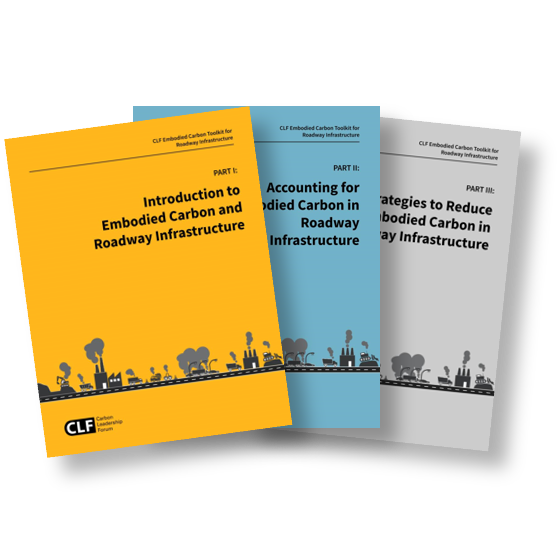by Milad Ashtiani
CLF Researcher
Building and operating the extensive network of our roadway infrastructure requires significant flows of energy and material resources. CLF’s recently published toolkit dives deep into the sources of greenhouse gas emissions from roadway construction, offers insights into accounting methodologies, and outlines key strategies to reduce these emissions.
CLF Embodied Carbon Toolkit for Roadway Infrastructure is part of a series designed to serve as a reference for transportation agencies, policymakers, designers, builders, and researchers involved with the construction, maintenance, and management of our roadways. Building on our previously published AIA-CLF Embodied Carbon Toolkit pour les architectes, this toolkit is a continuation of CLF’s expanded involvement within the horizontal structure arena (aka, infrastructure).
With a focus on understanding, estimating, and reducing embodied carbon within the context of transportation infrastructure, this toolkit serves as a pivotal resource in our collective efforts towards decarbonizing the built environment. In particular, this toolkit consists of three parts:
- Part I – Embodied Carbon and Roadway Infrastructure: In the first segment of our toolkit, we explore the concept of embodied carbon and its implications for roadway infrastructure.
- Part II – Accounting for Embodied Carbon in Roadway Infrastructure: In this part, we delve into a comprehensive introduction to life cycle assessment (LCA) as the primary method for embodied carbon accounting with a narrowed focus on roadways.
- Part III – Strategies to Reduce Embodied Carbon in Roadway Infrastructure: Once identified and accounted for, strategies can be adopted to reduce embodied carbon originating from roadways. In this final part of the toolkit, we provide a summary of practices to help shape a decarbonized future for roadways.
Interested to learn more about our new toolkit? Don’t go too far because it’s now available on our website.
